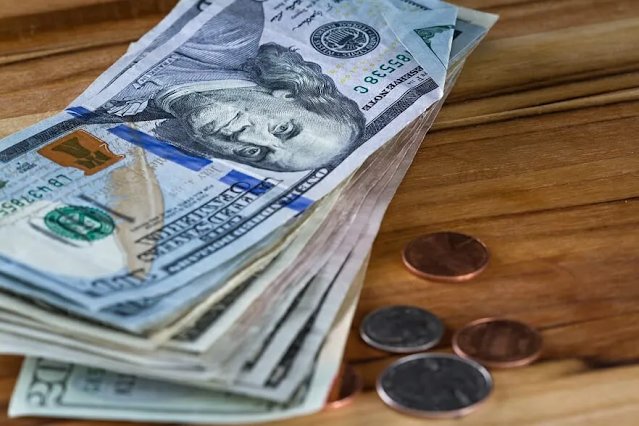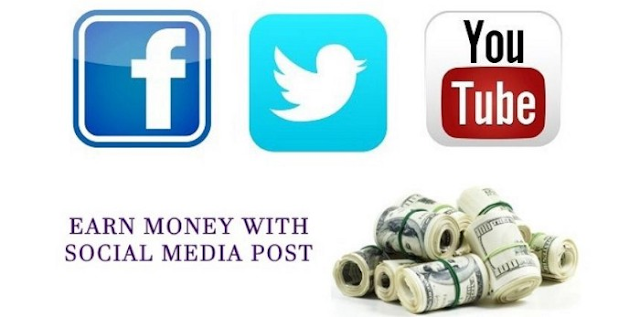MONEY - What Exactly Is Fiat Money? An overview and comparison to cryptocurrency
MONEY - Could you picture purchasing your weekly groceries while carrying gold? Instead of the paper money we're all used to today, individuals used gold as payment for goods and services earlier in history. Today, however, we trade goods for money such as the US dollar, the euro, and even cryptocurrencies instead of gold.
Different sorts of currency exist today; some, like fiat currencies, can be supported by a government, while others, like cryptocurrencies, are decentralized and supported by blockchain technology. What is a fiat currency, its benefits and drawbacks, and how it varies from other currencies will all be covered in this essay.
XEM THÊM :
Trùm Đổi Thưởng Quốc Tế | Bum79 Club | Update Mới Nhất 2022
What Is Fiat Money?
Fiat currency, often known as fiat money, is a form of money that is issued by the government but is not backed by real assets like gold. Instead, the public's confidence in the government, the issuer, is what gives fiat money its value.
What makes it a "fiat currency"? The Latin term fiat, which can be interpreted as "let it be done" or "it shall be," is the source of the English word fiat. Governments have more control over the currency and the amount that can be created since fiat money only has value because the government grants it that status.
A currency that has been legalized by the government and whose value is guaranteed by its issuer is known as fiat money (the government). Cryptocurrency, on the other hand, is a decentralized digital currency that is supported by blockchain technology and is not backed by a central authority like a government.
A cryptocurrency, as opposed to traditional money, is more volatile and offers a higher level of data security. The majority of transactions worldwide still use fiat currency, despite the notion among some that cryptocurrencies may eventually displace fiat money.
Fiat Money vs. Commodity Money
Commodity money has intrinsic value, which entails that it has a real or perceived worth. This kind of money is made from a valuable substance, like gold or silver. Contrarily, fiat money has no inherent worth. Consider $1 bills. Although they are all made of the same paper, the value of a dollar bill might vary based on what the government considers it to be worth.
Fiat Currency vs. Representative Money
The government also creates representative money, but unlike fiat money, it is backed by a real asset. There are various types of representational money, including cheques and credit cards, which show an intent to pay.
Although representational money can be supported by many assets, fiat money is always backed by the government. A check or credit card's value is guaranteed by the funds in a bank account.
The national currency of the United States was backed by gold and silver for the majority of its history. The Emergency Banking Act was enacted by the government in 1933 with the intention of regaining public trust in the country's financial sector. In addition to creating a program to renovate banking facilities, this act would also end the gold standard, which allowed people to exchange their money for gold. From that point forward, the U.S. dollar, a kind of fiat money, totally supplanted the gold standard.
Pros and Cons of Fiat Money
Fiat money has some advantages and disadvantages, much like other currencies and cryptocurrencies.
Fiat money is convenient to use and exchange, in addition to being produced at a low cost. Fiat money is not backed by a commodity, hence it is not scarce, unlike gold, which is one of its biggest advantages. Because of this, a government has more influence over the money supply, giving it the ability to manipulate economic factors like interest rates, liquidity, and credit availability.
A government can shield the nation from a financial crisis since it has control over the money supply. In fact, the U.S. Federal Reserve has a dual responsibility to maintain low levels of inflation and unemployment.
Disadvantages of Fiat Money
Despite having control over its currency supply, a government cannot ensure that the economy would be shielded from a financial crisis like a recession. Fiat money also has the drawback of being susceptible to inflation. If a government prints too much money due to poor management, hyperinflation may develop.
Furthermore, the price of fiat money is influenced by fiscal policy and governmental laws, which could lead to a bubble with a sharp rise and fall in prices.
The Future of Fiat Currency
Fiat money is currently accepted as legal tender in almost every nation, making it difficult to predict what the future holds. Although cryptocurrencies are growing quickly and some experts think they may eventually completely replace fiat currency, fiat money still provides governments more control over how to run a nation's economy. As a result, we may anticipate that it will continue to be the main form of exchange for many years.
FAQs About Fiat Currency
Here are some of the most frequent queries regarding fiat money.
What Are Alternatives to Fiat Money?
Nowadays, fiat money is accepted as legal tender in practically all nations. Despite the fact that gold coins can be bought and sold, they are not frequently utilized for ordinary purchases, even though they could serve as an alternative to fiat money.
Another rising alternative to fiat money is cryptocurrency. Bitcoin and other cryptocurrencies may eventually serve as the primary form of payment, but for the time being, they are still not generally recognized.
Why Do Modern Economies Favor Fiat Money?
The restricted supply of gold coming from mines prevented central banks from keeping up with its rising value. Fiat money was an alternative that allowed for convenient use, cost-effective production, and more freedom for the government to control its own currency.
Does Fiat Money Lead to Hyperinflation?
Although hyperinflation could result from overprinting fiat currencies, most developed nations typically endure modest inflation. Hyperinflation has happened before, even with commodity money, and it might do so again if a fiat currency loses value quickly, like when people lose confidence in the country's currency.
Why Is It Called a Fiat Currency?
Fiat currency stems from a term that can be translated to “it shall be” in Latin, and refers to a type of currency that’s issued by the government and is not backed by physical commodities, such as gold. The U.S. dollar, the euro, and the pound are examples of fiat money.
Is Bitcoin a Fiat Currency?
Since Bitcoin is not a legal tender issued by the government, it is not a fiat currency. Bitcoin is a decentralized cryptocurrency that is supported by blockchain technology.
Examples of Fiat Currency
Several instances of fiat money include:
-U.S. dollar (USD)
– Euro (EUR)
– British pound (GBP)
– Korean won (KRW)
– Japanese yen (JPY)
– Indian rupee (INR)
– Mexican pesos (MXN)
Read Article:






Comments
Post a Comment